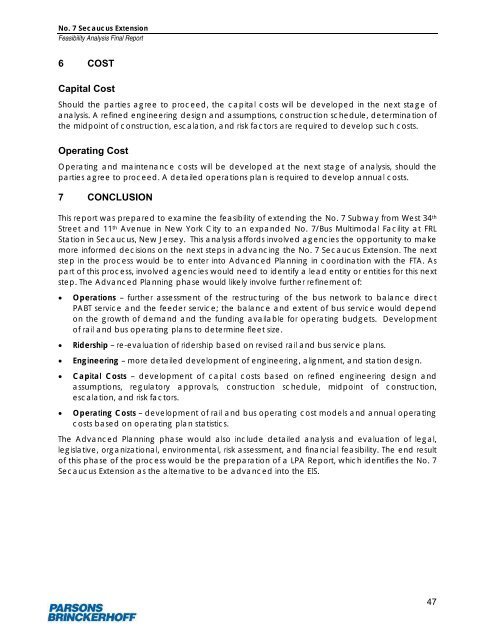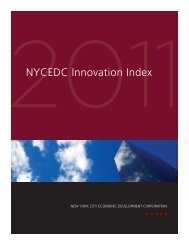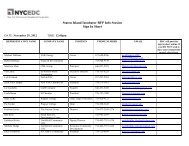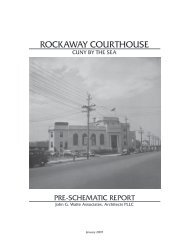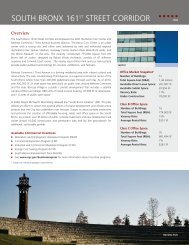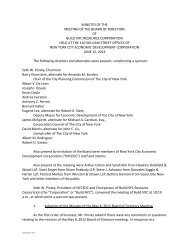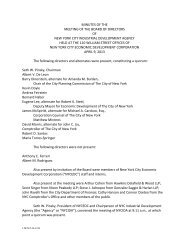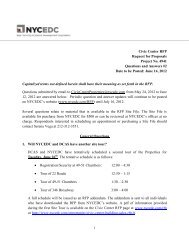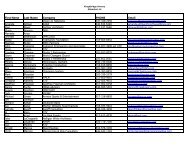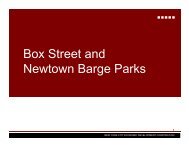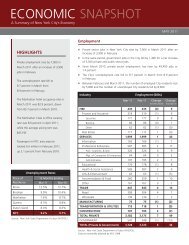No 7 Secaucus Extension Final Report - NYCEDC
No 7 Secaucus Extension Final Report - NYCEDC
No 7 Secaucus Extension Final Report - NYCEDC
Create successful ePaper yourself
Turn your PDF publications into a flip-book with our unique Google optimized e-Paper software.
<strong>No</strong>. 7 <strong>Secaucus</strong> <strong>Extension</strong>Feasibility Analysis <strong>Final</strong> <strong>Report</strong>6 COSTCapital CostShould the parties agree to proceed, the capital costs will be developed in the next stage ofanalysis. A refined engineering design and assumptions, construction schedule, determination ofthe midpoint of construction, escalation, and risk factors are required to develop such costs.Operating CostOperating and maintenance costs will be developed at the next stage of analysis, should theparties agree to proceed. A detailed operations plan is required to develop annual costs.7 CONCLUSIONThis report was prepared to examine the feasibility of extending the <strong>No</strong>. 7 Subway from West 34 thStreet and 11 th Avenue in New York City to an expanded <strong>No</strong>. 7/Bus Multimodal Facility at FRLStation in <strong>Secaucus</strong>, New Jersey. This analysis affords involved agencies the opportunity to makemore informed decisions on the next steps in advancing the <strong>No</strong>. 7 <strong>Secaucus</strong> <strong>Extension</strong>. The nextstep in the process would be to enter into Advanced Planning in coordination with the FTA. Aspart of this process, involved agencies would need to identify a lead entity or entities for this nextstep. The Advanced Planning phase would likely involve further refinement of:Operations – further assessment of the restructuring of the bus network to balance directPABT service and the feeder service; the balance and extent of bus service would dependon the growth of demand and the funding available for operating budgets. Developmentof rail and bus operating plans to determine fleet size.Ridership – re-evaluation of ridership based on revised rail and bus service plans.Engineering – more detailed development of engineering, alignment, and station design.Capital Costs – development of capital costs based on refined engineering design andassumptions, regulatory approvals, construction schedule, midpoint of construction,escalation, and risk factors.Operating Costs – development of rail and bus operating cost models and annual operatingcosts based on operating plan statistics.The Advanced Planning phase would also include detailed analysis and evaluation of legal,legislative, organizational, environmental, risk assessment, and financial feasibility. The end resultof this phase of the process would be the preparation of a LPA <strong>Report</strong>, which identifies the <strong>No</strong>. 7<strong>Secaucus</strong> <strong>Extension</strong> as the alternative to be advanced into the EIS.47


